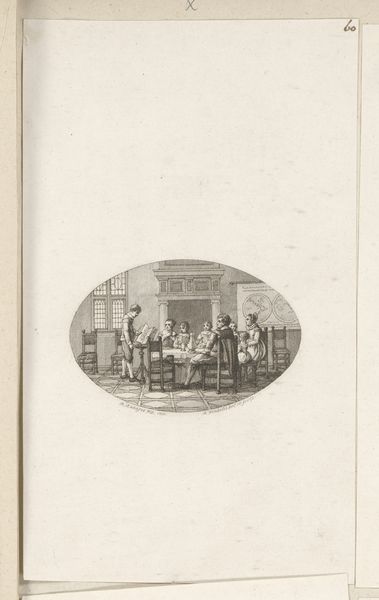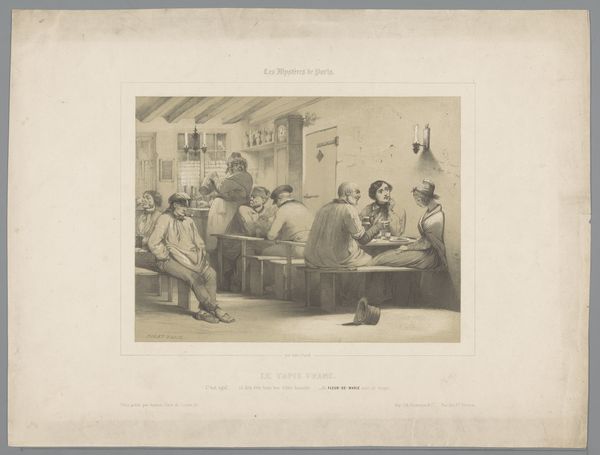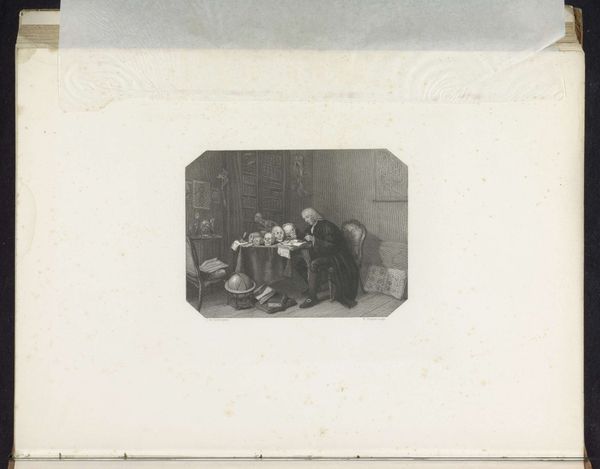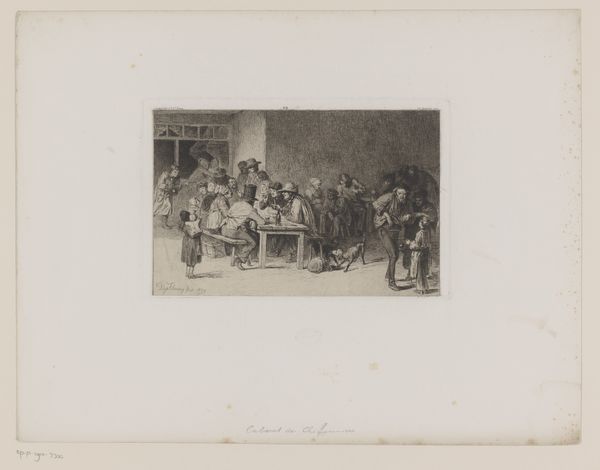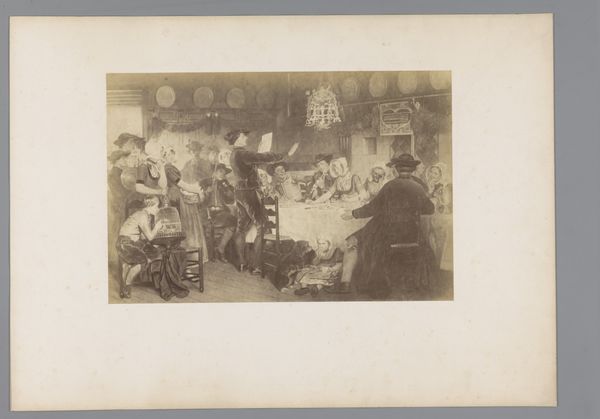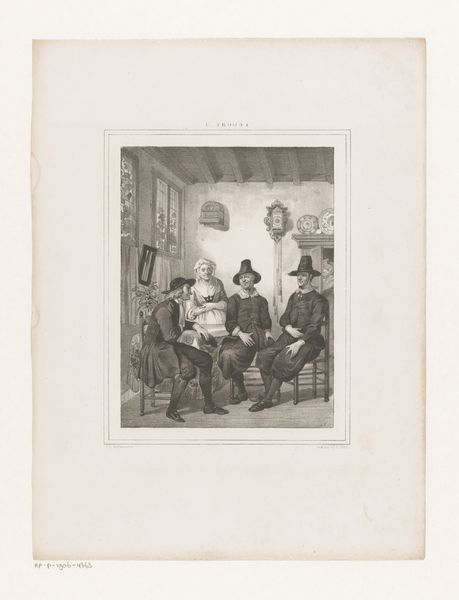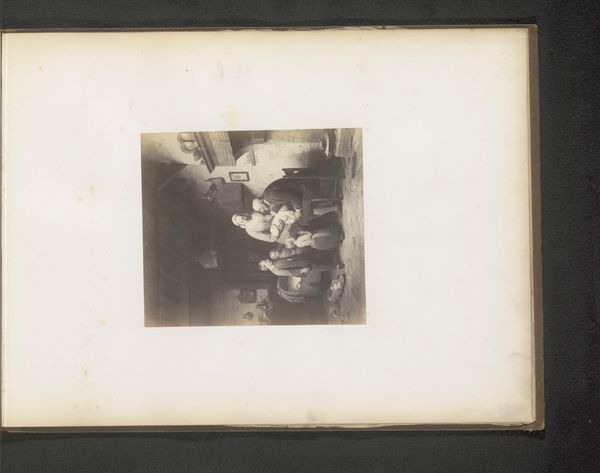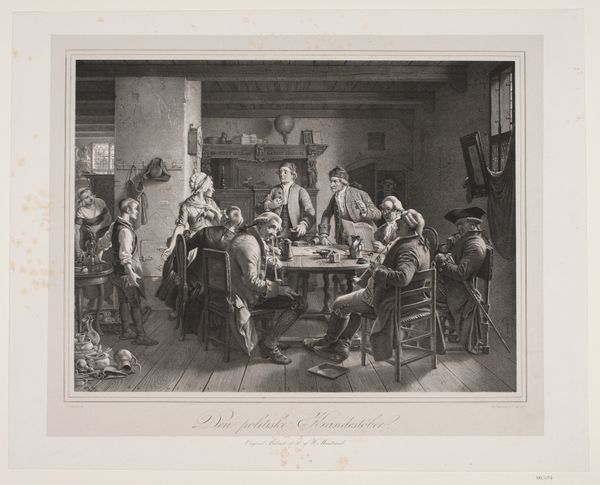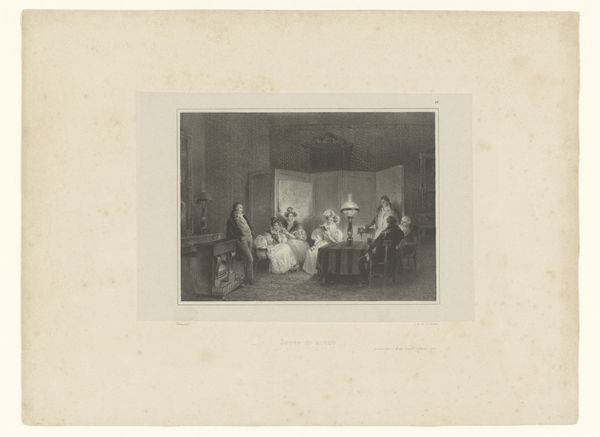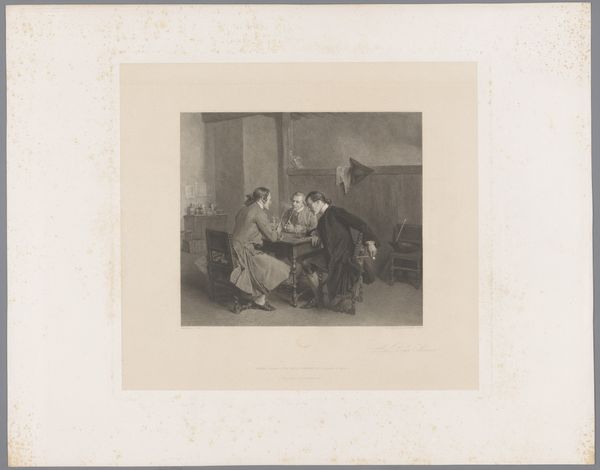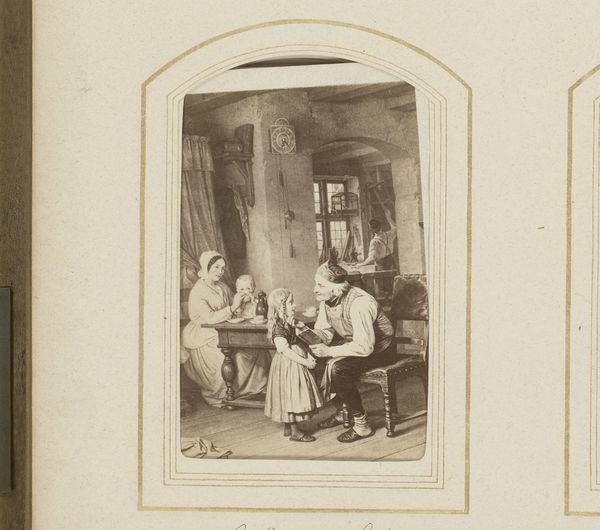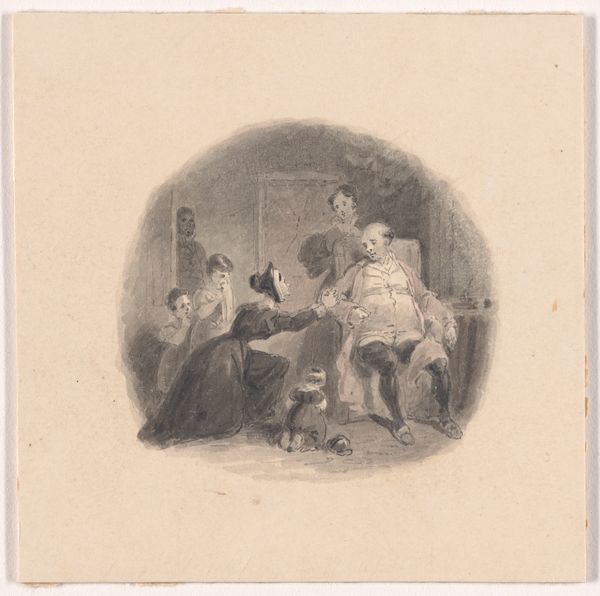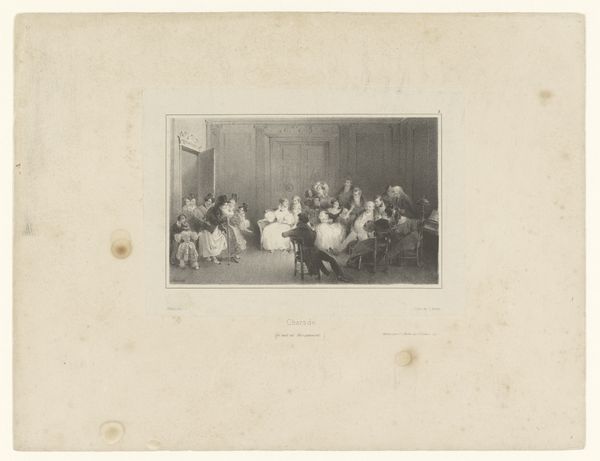
Fotoreproductie van Je n'avais que 16 ans van François Antoine De Bruycker before 1863
0:00
0:00
photography, gelatin-silver-print
#
portrait
#
photography
#
group-portraits
#
gelatin-silver-print
#
genre-painting
Dimensions: height 129 mm, width 169 mm
Copyright: Rijks Museum: Open Domain
Editor: This is a reproduction of François Antoine De Bruycker’s photograph "Je n'avais que 16 ans," dating from before 1863. It's a gelatin silver print depicting several women gathered around a table. What strikes me is how staged it feels; like a theatrical production frozen in time. How do you interpret this work? Curator: It's interesting you picked up on the theatricality. In these staged photographs, we can see the performance of domesticity and gender roles within the 19th century bourgeois household. The arrangement feels less about capturing an actual moment and more about reinforcing societal expectations, wouldn’t you agree? Editor: I do. They are all neatly positioned, and seem to interact as one would expect given social rules. Are you suggesting this staging itself offers some critique? Curator: Absolutely! This photograph reveals the artificiality inherent in these prescribed roles. Note how the figures are posed and the calculated details of the domestic scene. By meticulously constructing the image, De Bruycker inadvertently exposes the constraints placed upon women within the private sphere. How does the title "Je n'avais que 16 ans" resonate with you, considering these power dynamics? Editor: That adds a layer of discomfort. A girl of sixteen would've had little say in how she was depicted or what her role in the household would be. It emphasizes the lack of agency and the vulnerabilities of youth, doesn’t it? Curator: Precisely. De Bruycker, consciously or not, offers us a glimpse into the power structures operating within the 19th-century family unit, reflecting the societal expectation that young women conform to the domestic ideal. What do you take away from this analysis? Editor: I realize now that what I initially perceived as a simple, perhaps even quaint, domestic scene is actually a potent commentary on gender and societal control. Thanks! Curator: Indeed, these early photographs can be powerful tools for understanding the complexities of gender and class dynamics in history.
Comments
No comments
Be the first to comment and join the conversation on the ultimate creative platform.
